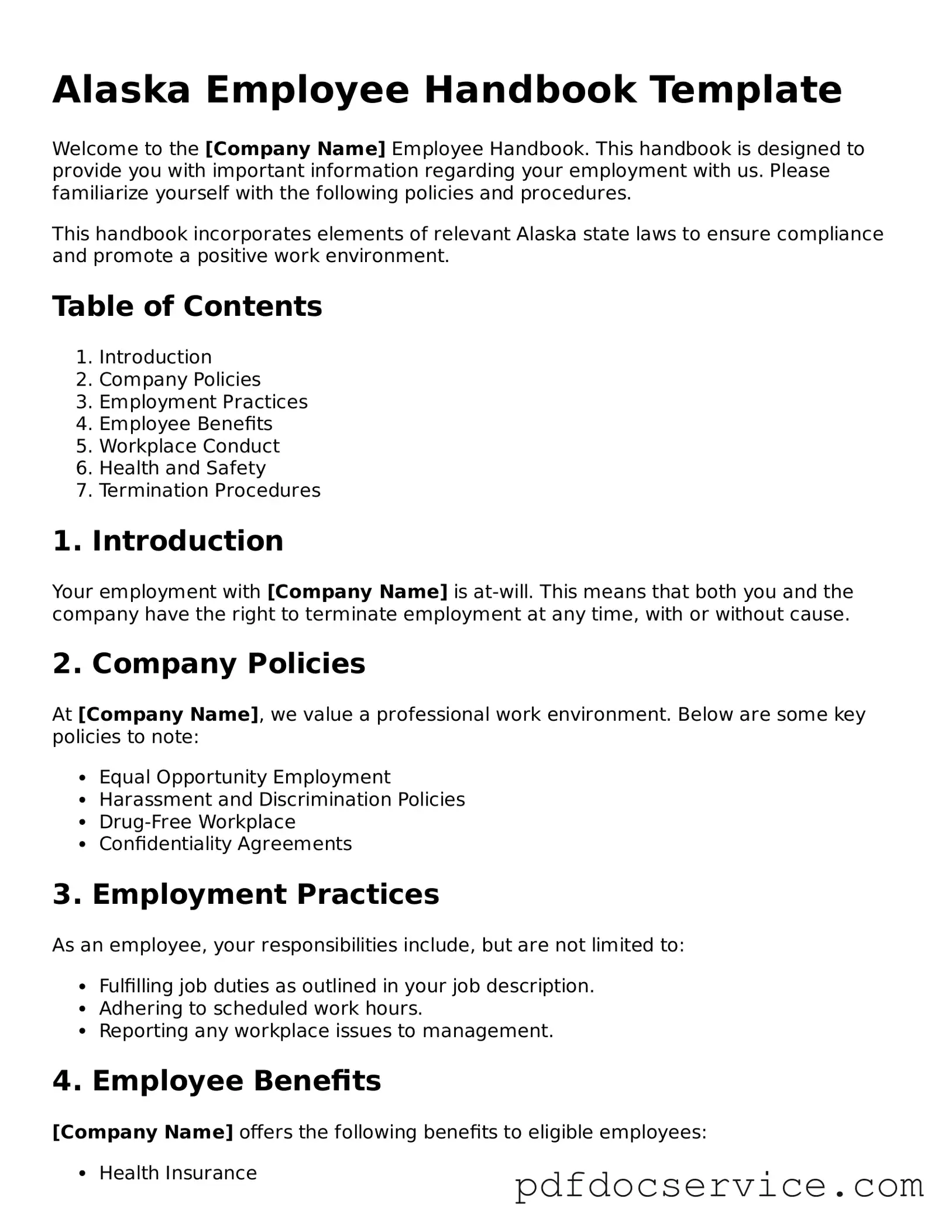The Alaska Employee Handbook form serves as a comprehensive guide for employees regarding company policies, procedures, and expectations. It outlines important information about workplace conduct, employee rights, benefits, and the organization’s mission. By providing clear guidelines, the handbook helps ensure that both employees and employers understand their responsibilities and rights within the workplace.
Who should receive the Alaska Employee Handbook?
Every employee, regardless of their position or length of service, should receive a copy of the Alaska Employee Handbook. This includes full-time, part-time, and temporary employees. It is crucial for all staff members to be familiar with the policies and procedures outlined in the handbook to promote a harmonious and productive work environment.
How often should the Employee Handbook be updated?
The Employee Handbook should be reviewed and updated regularly, at least once a year, or whenever significant changes occur within the organization or applicable laws. Regular updates ensure that the handbook reflects current practices and legal requirements, keeping both employees and employers informed of their rights and obligations.
What should I do if I have questions about the Employee Handbook?
If you have questions regarding the Employee Handbook, it is advisable to reach out to your supervisor or the human resources department. They can provide clarification on any policies or procedures that may be unclear. Open communication is encouraged, as it helps foster a better understanding of workplace expectations and promotes a positive work culture.
Is it mandatory for employees to sign an acknowledgment of receipt of the handbook?
Yes, it is generally recommended that employees sign an acknowledgment form indicating that they have received, read, and understood the Employee Handbook. This signed acknowledgment serves as a record that the employee is aware of the company policies and agrees to abide by them. It can be an important tool in addressing any future disputes regarding policy adherence.
What are the consequences of not following the policies outlined in the Employee Handbook?
Failure to adhere to the policies outlined in the Employee Handbook can result in various consequences, depending on the severity of the infraction. Possible outcomes may include verbal or written warnings, suspension, or even termination of employment in serious cases. It is essential for employees to familiarize themselves with the handbook to avoid potential disciplinary actions.
